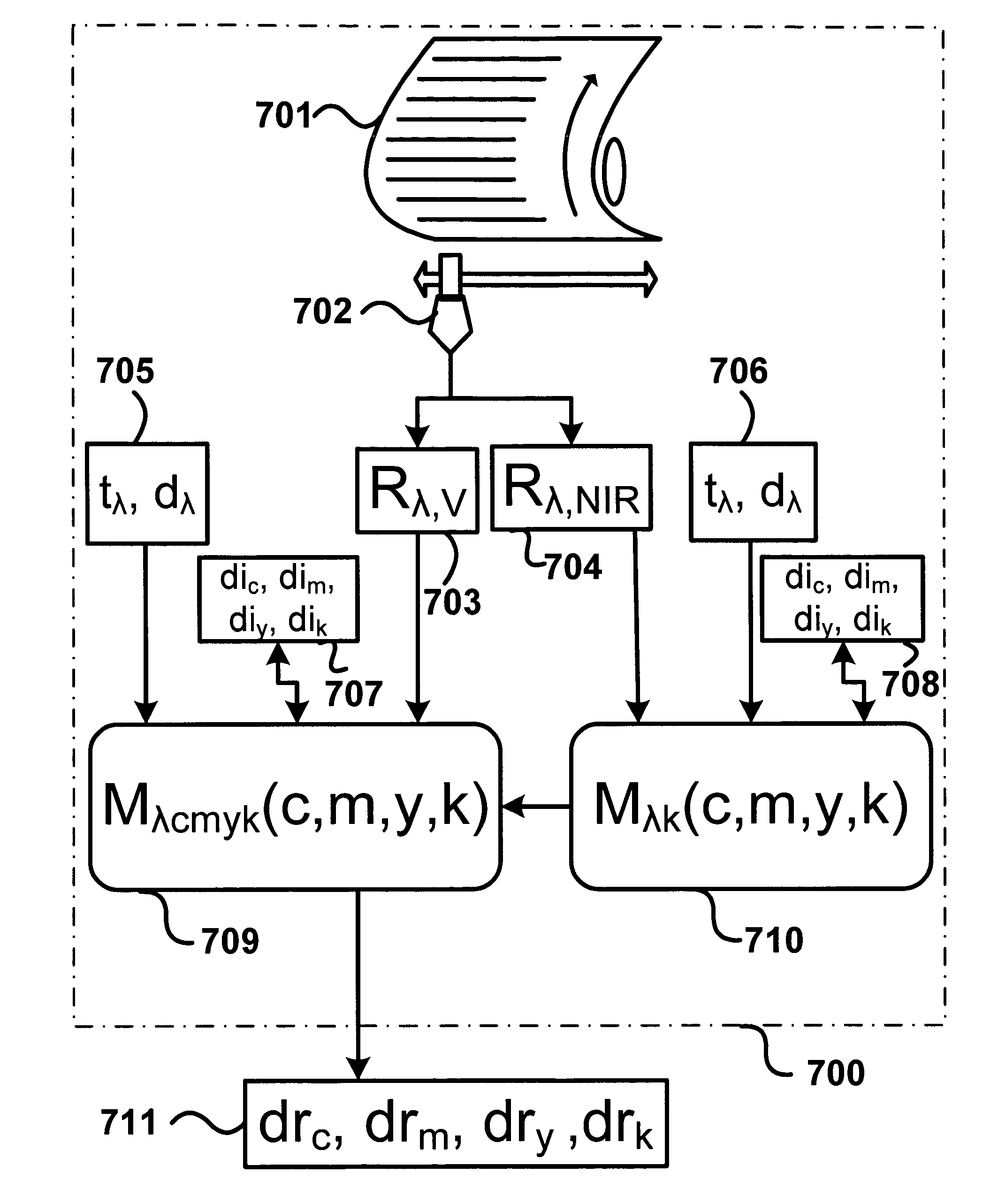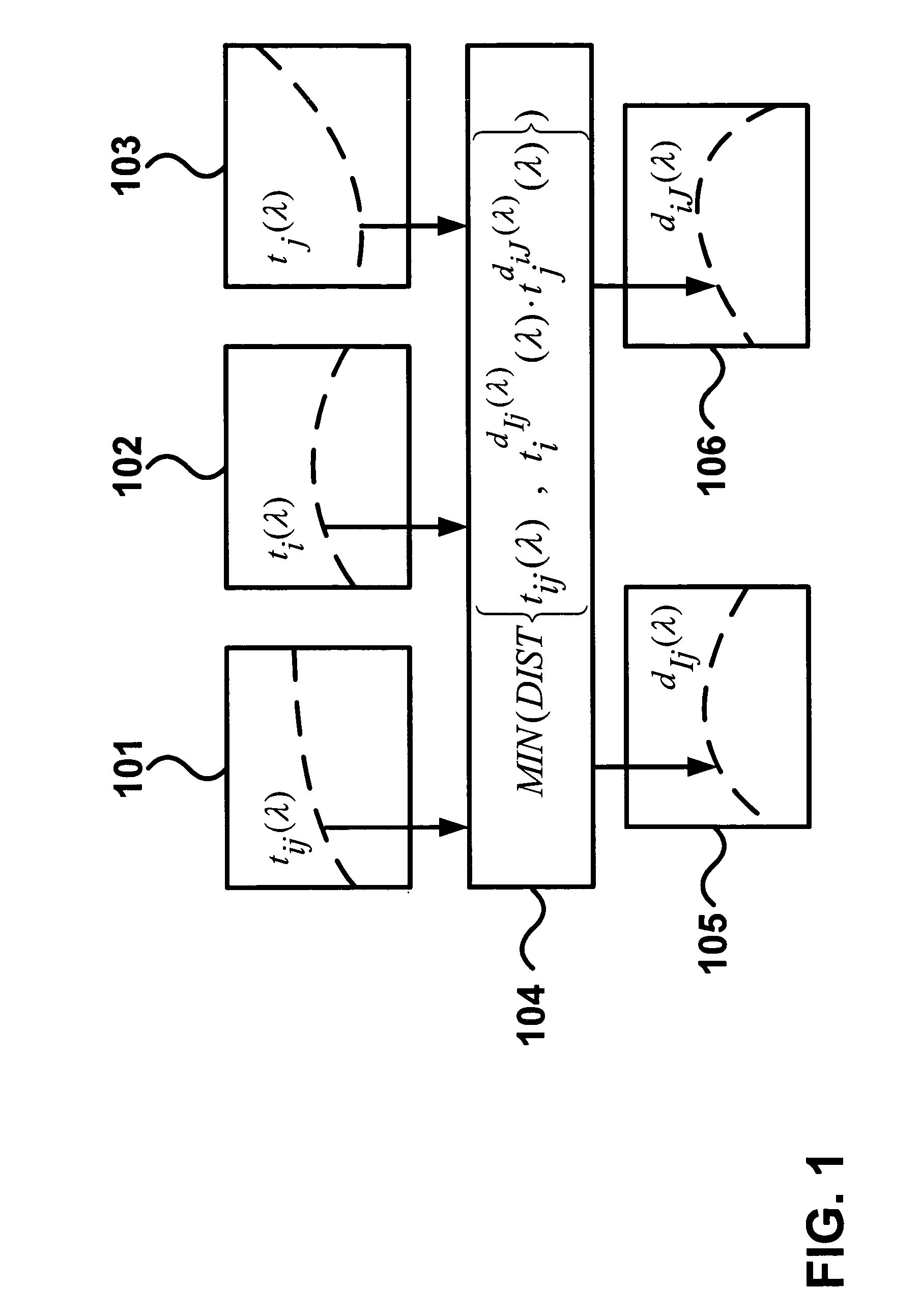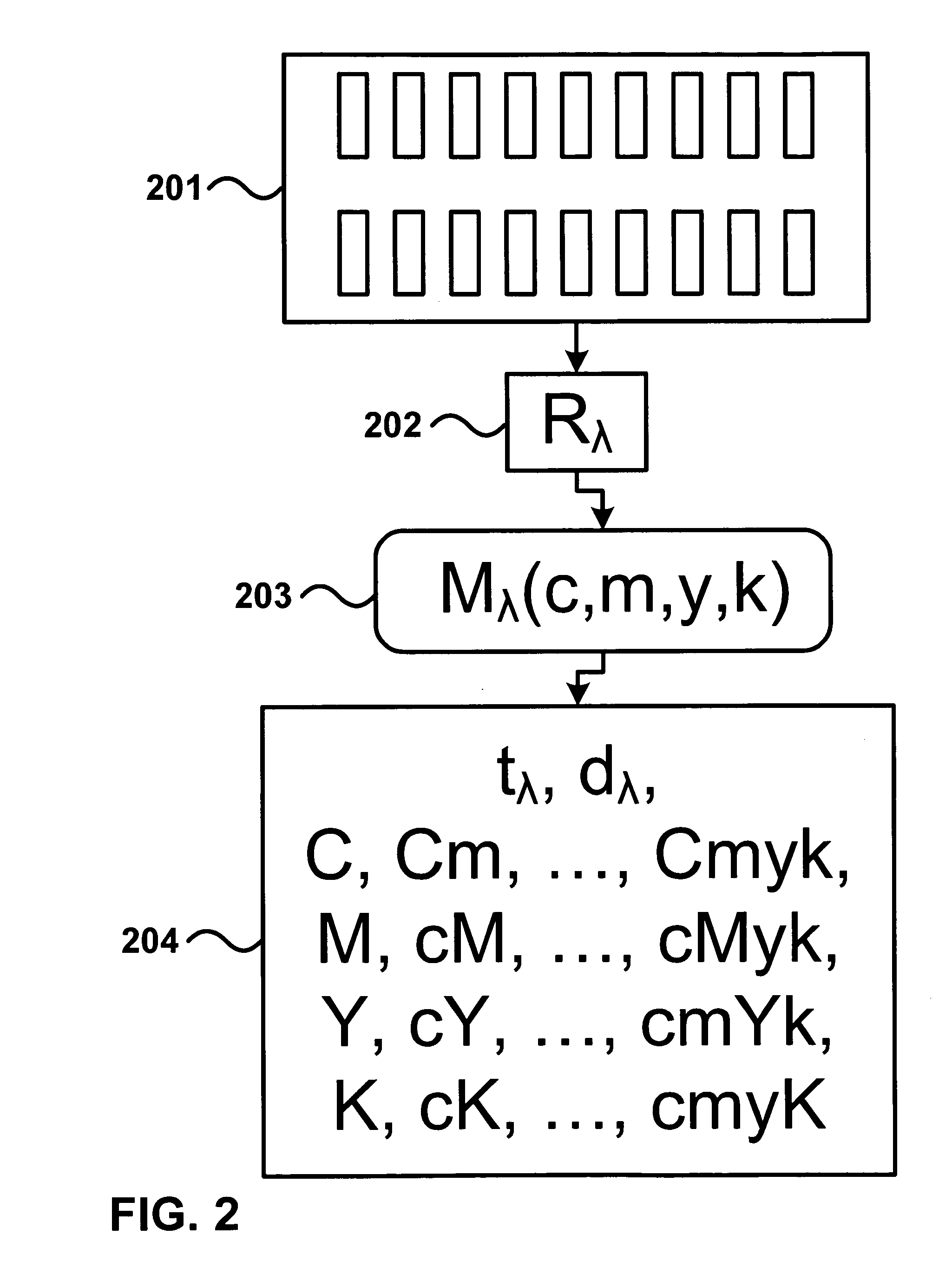Ink thickness variations for the control of color printers
a color printer and ink thickness technology, applied in printing presses, printing apparatus, printing, etc., can solve the problems of difficult to perform real-time control of ink thickness on high-speed printing presses, inability to easily achieve real-time control of ink thickness, and high color accuracy. , to avoid the time-consuming setup of print parameters
- Summary
- Abstract
- Description
- Claims
- Application Information
AI Technical Summary
Benefits of technology
Problems solved by technology
Method used
Image
Examples
Embodiment Construction
[0024]The present invention proposes models, a computing systems as well as methods for deducing ink thickness variations from spectral measurements carried out on a printer or printing press, possibly on-line and in real-time. The computed ink thickness variations enable controlling the ink deposition and therefore the color accuracy, both in the case of high-speed printing presses and of network printers. The ink thickness variations can be directly used for the real-time control of the print actuation parameters which influence the ink deposition, such as the ink feed and / or the damping agent feed in the case of an offset press.
[0025]The proposed method and computing system rely on a spectral prediction model explicitly incorporating as parameters the ink thicknesses and the ink thickness variations. Hereinafter, such a model is called “thickness variation enhanced spectral prediction model”. When this model is used for computing ink thickness variations, it may also be called “i...
PUM
 Login to View More
Login to View More Abstract
Description
Claims
Application Information
 Login to View More
Login to View More - R&D
- Intellectual Property
- Life Sciences
- Materials
- Tech Scout
- Unparalleled Data Quality
- Higher Quality Content
- 60% Fewer Hallucinations
Browse by: Latest US Patents, China's latest patents, Technical Efficacy Thesaurus, Application Domain, Technology Topic, Popular Technical Reports.
© 2025 PatSnap. All rights reserved.Legal|Privacy policy|Modern Slavery Act Transparency Statement|Sitemap|About US| Contact US: help@patsnap.com



